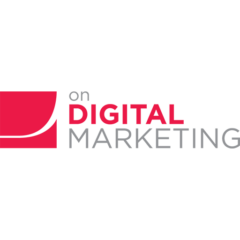In today’s digital landscape, Facebook ads have emerged as an indispensable tool for businesses striving to make their mark. This dynamic platform offers a gateway to unparalleled opportunities for brand expansion, web marketing, and entrepreneurial success.
Picture this: you’ve carefully crafted your Facebook ad campaign, pouring your heart and soul into captivating visuals and persuasive copy. But how can you ensure that your efforts don’t go unnoticed? Enter the realm of click-through rate (CTR).
Definition: Click-Through-Rate is the ratio of clicks on a specific link to the number of times a page, email, or advertisement is shown.
CTR, the holy grail of online marketing, holds the key to unlocking audience engagement and gauging the effectiveness of your ad. This pivotal metric measures the effectiveness of your ads in captivating and engaging your audience.
CTR provides invaluable insights into how well your ads resonate with viewers by calculating the ratio of clicks to impressions or views.
In simpler terms, CTR reveals the number of individuals inspired to click on your ad after encountering it.
For instance, if your campaign reels in 100 clicks out of 1,000 impressions, your CTR stands at an impressive 10%.
But why does CTR matter? The answer lies in its profound impact on your ad’s performance. It’s a metric that speaks volumes about how your target audience reacts to your offering, indicating whether they’re enticed enough to take action and click through.
Are you intrigued to delve deeper? Join us on a journey where we explore:
- The significance of CTR for Facebook ads and its direct influence on ad performance
- Factors that impact CTR on Facebook ads and actionable steps to improve them
- Industry benchmark data showcasing average CTRs across various sectors
- Expert tips and strategies to skyrocket your CTR on Facebook ads
As we navigate through industry benchmark data on average CTRs, we’ll equip you with valuable tips to empower your Facebook ads and maximize their potential.
Before diving into benchmarking and improving your CTR, let’s break down why you need a good CTR.
Unleashing the Click Revolution: The Power and Purpose of a Stellar CTR for Facebook Ads
CTR is an engagement metric that tells you whether a Facebook ads campaign resonates with your target audience or if it’s far off the mark.
It’s an early indicator of success in social media marketing that involves a healthy amount of informed decision-making.
A high CTR shows that an ad resonates well with the audience, leading to the following:
- Lower cost-per-click for the ads: Facebook ads often assign a higher relevance score to each ad based on its CTR. This translates to a lower cost-per-click (CPC) for your ads, as the platforms reward ads that provide value and relevance to users.
- A higher ad impression share: When an ad has a high CTR, it implies a high relevance which Facebook will cash in on by distributing it more widely, leading to a larger share of ad impressions.
- Increased conversion rates: When users engage with and click on your ad, they are more likely to take the desired action on your website, such as making a purchase.
- Benefit from free clicks: If your ad generates significant interest, users might share it with their network. When others click on the shared post, you receive additional traffic and exposure without incurring any additional charges.
- Improved organic search ranking for your site: Facebook ads drive a notable amount of organic and paid traffic to your site. Search engines consider user engagement signals when determining whether a site deserves a higher ranking.
A recent Meta study found that Facebook ads were responsible for a 29% increase in website traffic, both organic and paid. Half of the referred site visits led to increased incremental sales.
Summary: A good CTR increases the ROAS (return on ad spend) for a business while also leveraging impressions and organic search to increase the number of customer touchpoints.
Now that we’ve unveiled the immense benefits, it’s time to unravel the factors that can either make or break your CTR. Prepare to discover the secrets to crafting captivating ads that ignite engagement and propel your Facebook ads to new heights.
Mastering the CTR Equation: Unraveling the Key Factors That Drive Success on Facebook Ads

Facebook ads rely on an algorithm to determine which ads are shown to which users. The click-through rate of an ad affects the algorithm, as it is an indicator of the relevance and appeal of the advertisement to the audience.
Here are the top three factors that can affect the CTR of Facebook ads:
Factor 1 – Ad Placement – Maximizing Visibility and Engagement
One of the crucial factors that can significantly impact the click-through rate (CTR) of your Facebook ads is the placement of your ads on the platform. Understanding the nuances of ad placement can make a substantial difference in the performance and engagement of your campaigns.
Ads placed in the user’s newsfeed outshine those positioned on the sidebar. The newsfeed is where users spend most of their time on Facebook, scrolling through a personalized stream of content from their friends, family, and followed pages.
This prime real estate offers a higher level of visibility and engagement compared to the sidebar, which tends to be less prominent and easily overlooked.
When your ad seamlessly integrates into the user’s newsfeed, it becomes part of the organic content they are consuming.
It has a greater chance of capturing their attention, as it blends in naturally with the surrounding posts.
As a result, ads placed in the newsfeed often experience higher click-through rates, as users are more likely to engage with them.
To illustrate, let’s consider an example. Imagine you are a fashion retailer promoting a new collection of summer dresses.
Placing your ads in the newsfeed ensures that they appear amidst the user’s friends’ posts, family updates, and other engaging content. As users scroll through their feeds, they see your visually appealing ad showcasing the latest trendy dresses.
Since the ad seamlessly integrates into their feed, it catches their eye and piques their interest. They are more likely to engage with the ad by clicking on it to explore the collection further or even make a purchase.
This organic integration and visibility in the newsfeed contribute to a higher CTR for your ads.
Factor 2 – Target Audience – Captivating the Right Audience With Click-Worthy Ads
When it comes to achieving a stellar click-through rate (CTR) on Facebook ads, one of the key factors is understanding and effectively targeting your audience.
Tailoring your ads to align with the interests and behaviors of your target audience can significantly improve their engagement and increase the likelihood of clicks.
However, it’s essential to strike a balance and avoid falling into the traps of hyper-targeting or overly broad audience targeting.
To illustrate the importance of targeting, let’s consider an example.
Suppose you are a fitness apparel brand launching a new line of running shoes. In this case, your target audience would likely be individuals who are fitness enthusiasts, avid runners, or interested in athletic wear.
By tailoring your ads to appeal to this specific audience, you can showcase the features and benefits of your running shoes that resonate with their needs and preferences.
For instance, your ad could highlight the shoes’ durability, cushioning, and breathability, emphasizing how they enhance performance and provide optimal comfort during runs.
By focusing your messaging and visuals on the specific pain points and desires of your target audience, you are more likely to capture their attention and inspire them to click on your ad to learn more or make a purchase.
Factor 3 – Ad Format – Igniting Engagement With Creative Choices
The ad format you choose for your Facebook ads can make a substantial difference in the click-through rate (CTR) you achieve.
With various formats available, such as images, videos, slideshows, and carousels, you have the opportunity to ignite engagement and capture users’ attention in different ways.
Images have the power to convey a strong message with a single captivating visual, evoking curiosity and prompting users to click for more information.
Conversely, videos can tell stories, evoke emotions, and bring your brand to life, increasing the chances of driving higher CTRs.
“Marketing is no longer about the stuff that you make, but about the stories you tell.”
— Seth Godin, Bestselling Author and Blogger
Slideshows offer a dynamic and visually appealing way to present multiple images or messages within a single ad.
Carousels enable you to showcase a range of products or highlight various features.
By carefully selecting the most appropriate ad format for your campaign objectives and target audience, you can leverage the strengths of each format to ignite engagement and increase CTR.
Expert Tip: Testing and analyzing the performance of different formats can help you identify the ones that resonate best with your audience, allowing you to optimize your campaigns and achieve tremendous success.
Analyzing user journey data and using analytics is essential to understanding how to improve CTR on Facebook ads.
“The buyer’s journey is nothing more than a series of questions that must be answered.”
— Analyst Firm IDC
Other paid outlets, such as email marketing, can also be used to direct traffic to Facebook ad campaigns and improve brand growth.
Decoding the CTR Landscape: Navigating the Range of Average CTRs for Facebook Ads Across Industries

One of the most common questions asked by businesses running Facebook ads is, “What is a good CTR?”
The simple answer is, it depends.
The average CTR for Facebook ads can vary significantly depending on the industry and target audience.
According to recent data by WordStream, the average CTR for Facebook ads across all industries is 0.90%.
However, the specific industry averages can land much higher or lower.
For instance, the same data set shows that the legal industry has the highest CTR at 1.61%, while recruitment and job training niches have the lowest at 0.47%. This makes absolute sense since job seekers are more likely to click through on LinkedIn rather than Facebook.
Similarly, B2C businesses tend to have higher CTRs than B2B businesses because the B2C sales cycle is shorter, and the purchases are more impulsive.
Understanding the benchmark CTR data for your industry can help set realistic expectations and goals for your Facebook ad campaigns.
A higher CTR can increase the chances of generating leads, sales, and overall brand growth through Facebook ads.
That being said, CTRs are not the only success metric. They paint an incomplete picture of the success of a Facebook ad campaign.
In addition to CTRs, your data should include the following:
- Conversion rates: Percentage of users who take a desired action after clicking on your Facebook ad. This action could be making a purchase, filling out a form, or subscribing to a service.
- Cost per click: Average amount you pay for each click on your Facebook ads. A lower CPC is desirable as it helps you maximize your budget and reach a larger audience without overspending.
- Return on investment: Profitability and effectiveness of your Facebook campaign. It calculates the revenue generated from the campaign compared to the overall investment, including ad spend, creative production, and other associated costs.
While there is no universal “good” CTR for Facebook ads, understanding the benchmark data for your industry can help set realistic goals and expectations.
By focusing on factors that affect CTR, testing different strategies, and using data to drive decisions, you can improve your business’s Facebook ad campaigns and ultimately drive brand growth.
To improve CTR for your Facebook ad campaigns, it is crucial to understand the user journey and how your target audience interacts with your ads.
Utilizing analytics and data-driven insights can help identify areas for improvement, such as ad placement, targeting, and messaging.
Paid outlets, such as sponsored posts, can also be used to increase the visibility and engagement of your Facebook ads.
Additionally, integrating email marketing and social media strategies can help create a cohesive brand message and increase overall web marketing efforts.
The table below provides an overview of the average click-through rates (CTR) for Facebook ads across various industries, highlighting the range of CTRs observed within each industry.
| Average CTR (In Percentage) | |
| Industry | CTR Range |
| Finance | 1.5–2.0% |
| Insurance | 1.2–1.8% |
| Technology | 1.0–1.5% |
| Retail | 0.7–1.3% |
| Healthcare | 1.2–1.7% |
| Real Estate | 0.9–1.4% |
| Travel | 1.3–1.8% |
| Education | 1.0–1.5% |
| Food and Beverage | 1.1–1.6% |
Elevating Your CTR Game: Strategies to Boost Click-Through Rates for Your Facebook Ad Campaigns
Improving the CTR for your Facebook ads is crucial for online marketing success. Here are some tips and strategies you can use to improve your Facebook ad CTR and boost your brand growth:
- Use eye-catching visuals: Facebook ads are a visual medium, and using high-quality images or videos can grab your audience’s attention. Make sure your visuals are relevant and align with your brand message.
- Craft compelling ad copy: Engage your audience with catchy headlines and persuasive ad copy. Your copy should be concise, relevant, and provide value to the audience.
- Define your target audience: Know your target audience and customize your ads to their preferences. Targeting the right audience can help you improve CTR and conversions.
- Optimize for mobile devices: Over 98% of Facebook users access the platform through their mobile devices. Ensure that your landing pages are mobile-friendly, and your ads load quickly and seamlessly on mobile devices.
- Run A/B tests: Test different ad variations and measure the results to determine what works best for your target audience. Use analytics to measure success and analyze user journeys to identify any bottlenecks.
Implementing these strategies can help businesses succeed with Facebook ads and paid outlets. In addition, this can also benefit email marketing, digital marketing, and web marketing campaigns. These tactics can improve analytics and help entrepreneurs grow their businesses.
The video below summarizes the essential Facebook Ad strategies into three steps:
Master the Art of CTR and More: Ignite Your Marketing Success
In the ever-evolving digital marketing landscape, understanding and optimizing your click-through rate (CTR) is paramount to achieving remarkable results.
As we’ve explored the significance of CTR for Facebook ads, it’s clear that this metric holds the key to unlocking valuable insights into customer behavior and preferences.
At OnDigitalMarketing, we are dedicated to empowering marketers and entrepreneurs with tactical and real-world education from the trenches of modern ecommerce and digital marketing.
Our mission is to equip you with the knowledge and strategies to master CTR and propel your campaigns to new heights.
To stay ahead in this competitive digital landscape, it’s essential to continuously monitor and analyze your CTR using advanced analytics tools. This data-driven approach allows you to fine-tune your content, targeting, and ad formats, ensuring that every click counts.
Are you ready to take your CTR game to the next level?
Start your journey to digital marketing excellence with our comprehensive Beginner’s Guide to Digital Marketing textbook. Gain insights into user empathy, digital strategy, SEO, social media, PPC, email, and web analytics—all essential components for success in the digital realm.
Stay updated with the latest trends and best practices, and join a community of marketers dedicated to driving exceptional results.
Take advantage of the opportunity to maximize your CTR, boost brand awareness, and convert visitors into loyal customers. Together, let’s ignite your marketing success.
